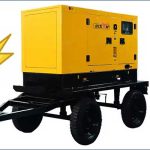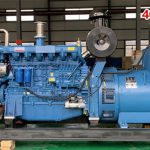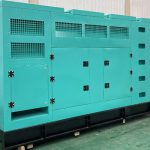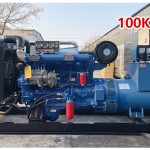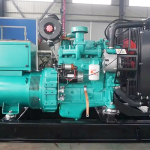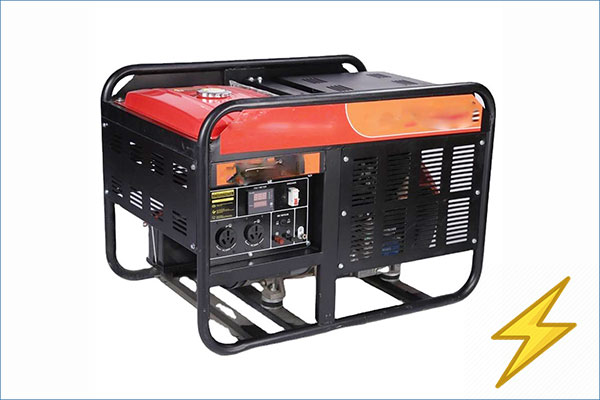Understanding the gasoline generator exhaust temperature is crucial for ensuring optimal performance and longevity of the machine. This metric is not only an indicator of the generator’s efficiency but also plays a significant role in maintaining safety standards. By monitoring the exhaust temperature, engineers can prevent potential overheating and subsequent damage to the generator.

What is Exhaust Temperature?
The exhaust temperature of a gasoline generator refers to the temperature of the gases expelled from the engine after combustion. These gases are a byproduct of the fuel combustion process and include carbon dioxide, water vapor, and various other compounds. Typically, the exhaust temperature ranges from 500°F to 1,200°F (260°C to 650°C), depending on the generator’s load and operating conditions.
Factors Affecting Exhaust Temperature
Several factors influence the exhaust temperature of a gasoline generator. Firstly, the load on the generator significantly impacts this temperature. A higher load results in increased fuel combustion, which in turn raises the exhaust temperature. Conversely, a lower load generally leads to a decrease in exhaust temperature.
Additionally, the type of fuel used can affect the exhaust temperature. For example, gasoline with a higher octane rating typically burns more efficiently, potentially resulting in a lower exhaust temperature compared to lower octane fuels.
Moreover, the ambient temperature and altitude can also influence the exhaust temperature. Generators operating in higher altitudes or colder environments may exhibit different exhaust temperature profiles compared to those running at sea level or in warmer climates. Transitioning between these environments requires careful monitoring to ensure the generator operates within safe parameters.
Importance of Monitoring Exhaust Temperature
Monitoring the exhaust temperature of a gasoline generator is essential for several reasons. Primarily, it helps in identifying any potential issues with the combustion process. For instance, an unusually high exhaust temperature could indicate incomplete combustion or other engine inefficiencies that need to be addressed.
Furthermore, maintaining the exhaust temperature within the recommended range is vital for the longevity of the generator. Excessive temperatures can cause premature wear and tear on engine components, leading to costly repairs or replacements. Regular monitoring allows for timely maintenance and adjustments, thereby extending the life of the generator.
In addition to performance and longevity, monitoring exhaust temperature is crucial for safety. High exhaust temperatures can pose a fire hazard, especially if flammable materials are present nearby. By keeping the exhaust temperature in check, operators can prevent dangerous situations and ensure a safer working environment.

Methods of Measuring Exhaust Temperature
There are several methods for measuring the exhaust temperature of a gasoline generator. One common approach is using thermocouples, which are temperature sensors that can withstand high temperatures. These sensors are typically installed in the exhaust manifold and provide real-time temperature readings.
Another method is infrared thermography, which uses infrared cameras to measure the surface temperature of the exhaust system. This non-contact method is particularly useful for identifying hotspots and other potential issues without interfering with the generator’s operation.
Both methods have their advantages and can be used in conjunction to provide a comprehensive understanding of the exhaust temperature profile.
Best Practices for Managing Exhaust Temperature
To manage the exhaust temperature of a gasoline generator effectively, it is important to follow several best practices. Firstly, ensure that the generator is operated within its recommended load range. Overloading the generator can lead to excessively high exhaust temperatures and potential damage to the engine.
Regular maintenance is also crucial. This includes checking and replacing air filters, spark plugs, and other components that can affect the combustion process. Keeping the engine in good condition helps maintain efficient fuel combustion and stable exhaust temperatures.
Additionally, using high-quality fuel can contribute to better combustion and lower exhaust temperatures. It is advisable to use gasoline with the appropriate octane rating as specified by the generator manufacturer.
Finally, installing proper ventilation systems can help dissipate excess heat and maintain a safe exhaust temperature. This is particularly important for generators used in enclosed spaces or environments with limited airflow.
Conclusion
In conclusion, understanding and managing the exhaust temperature of a gasoline generator is essential for optimal performance, longevity, and safety. By monitoring this critical parameter and following best practices, operators can ensure their generators run efficiently and reliably. Whether for industrial, commercial, or residential use, maintaining the exhaust temperature within the recommended range is key to getting the most out of a gasoline generator.






